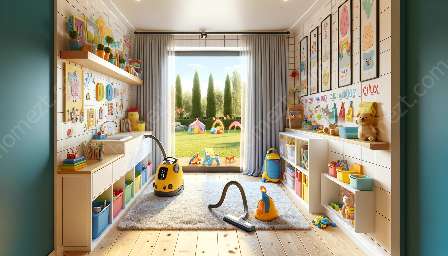Children's rooms are often a haven for dust and allergens, making it essential to maintain cleanliness and employ effective home cleansing techniques. In this guide, we will explore various methods to reduce dust and allergens, creating a healthier environment for children.
Understanding Dust and Allergens
Dust and allergens are common in indoor environments and can exacerbate allergies and respiratory issues in children. It's important to recognize the sources of dust and allergens, including pet dander, dust mites, pollen, and mold spores.
Maintaining Cleanliness in Children's Rooms
Regular cleaning is crucial in reducing dust and allergens. Start by minimizing clutter and organizing toys and belongings to make cleaning more manageable. Vacuuming carpets, dusting surfaces, and washing bedding regularly will help control dust and allergen levels. Opt for hypoallergenic bedding and curtains to further minimize exposure.
Home Cleansing Techniques
Utilize home cleansing techniques such as using natural cleaning products to avoid harsh chemicals that may exacerbate respiratory issues. Employ air purifiers with HEPA filters to capture airborne allergens, and consider using washable rugs and curtains to reduce dust accumulation. Additionally, proper ventilation can help improve air quality.
Effective Strategies for Dust and Allergen Reduction
Implementing effective strategies to reduce dust and allergens is essential for children's well-being. Encourage frequent handwashing to minimize the spread of allergens and consider implementing a no-shoe policy indoors to prevent tracking in outdoor pollutants. Regularly wash stuffed animals and fabric toys, and designate a pet-free zone within the child's room if applicable.
Conclusion
By understanding the sources of dust and allergens, maintaining cleanliness in children's rooms, and employing effective home cleansing techniques, it is possible to create a healthier environment for children. By implementing these strategies, parents and caregivers can help reduce the impact of dust and allergens on their children's health.


